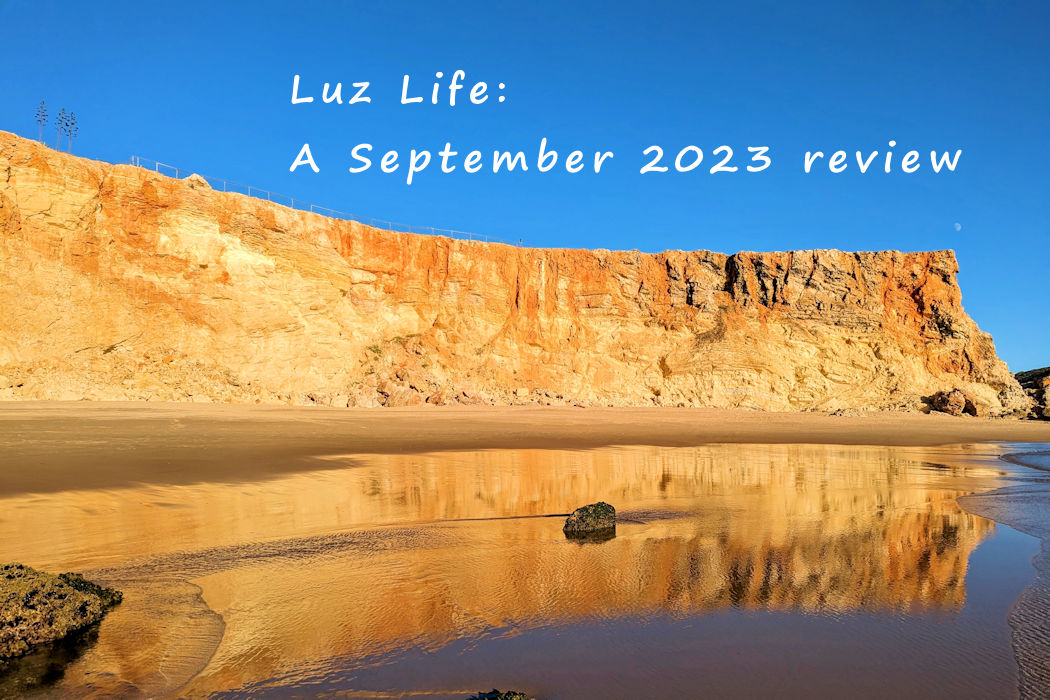
A brief recap: Since arriving at Ocean Villas Luz in August 2020, writer David Lugg has been experiencing all aspects of Luz Life. This is his review of September 2023:
When the English novelist Charlotte Bronte used the term ‘Wild West’ back in 1849, she no doubt evoked images of cowboys, saloons and the anarchic world of the American frontier. Though I can’t promise a chance meeting with Billy the Kid, I can promise you that the south west of Portugal has its own wild west in the Natural Park of ‘Sudoeste Alentejano e Costa Vicentina’. What’s more, I would wager that it is far more beautiful and there’s no chance of being caught in a gunfight with the local sheriff.
Occupying an area of almost 900km², the park stretches from our neighbouring village of Burgau to the far western point of Cabo de São Vicente. It also extends up past the border of the Algarve into Alentejo, to the fringe of the pretty coastal town of Sines. To give that a bit of perspective, it would take over two hours to drive from north to south. It is, without doubt, one of the finest preserved stretches of coastline in Europe and it is the primary reason why I chose to live here as a resident.

Back in August 2019, I ventured, somewhat blindly, into a self-guided tour of the natural park and was blown away by the dramatic high cliffs, hidden beaches and unspoilt landscape. It is home to a remarkable range of life. On land, there are about 750 species of flora, around 100 of these are endemic to the region. Some of the most notable include the Algarve toadflax, the bumblebee orchid and the strawberry tree. In turn, this helps to attract some extraordinary insects such as the ‘two-tailed Pasha’ butterfly.
On the coast, you can find seahorses and turtles and oysters not to mention a wide array of sea flora which is critical for oxygen, food and shelter. Back on land, the terrain is perfect for otters, badgers, beech martens and mongooses. The region also offers the ideal environment for reptiles such as lizards, newts, salamander, frogs and other creatures that I won’t mention just in case anyone reading this is squeamish.

And last but not least, let us not forget to look to the skies where it is possible to spot an astonishing spectrum of bird life. Though many are resident to the park, there are a large number that use the prevailing northerly wind as a means to migrate down the coast. You can expect (or at least hope) to catch a glimpse of woodpeckers, cuckoos, falcons, puffins, owls, bats, vultures, bee-eaters, eagles and so much more. Visitors in October are treated to a marvellous aerial display.

And speaking of eagles, the more eagle-eyed will have noticed that our neighbouring park is a ‘natural’ park rather than a ‘national’ park. In case you were wondering, there’s not a great deal of difference between the two, but, primarily, access is usually limited into a national park, whereas human activity is far more common in a natural park. As long as the environment is respected, then people are largely free to come and go as they please.

Combined with some of the most dramatic, picturesque beaches in western Europe, you can understand why I swore that I would return to this magical part of the world. I’ll be honest, at the time, I didn’t expect to be living here with a house and a baby, but I’m delighted that I made that decision. The natural park is only a 5-minute-drive from Praia da Luz and it is ever-enticing regardless of the season. Perhaps now it’s your turn to explore it – wild west cowboy boots are optional.
More news next month.
David Lugg
#oceanvillasluz #davidluggwriter
All photo images owned by David Lugg
